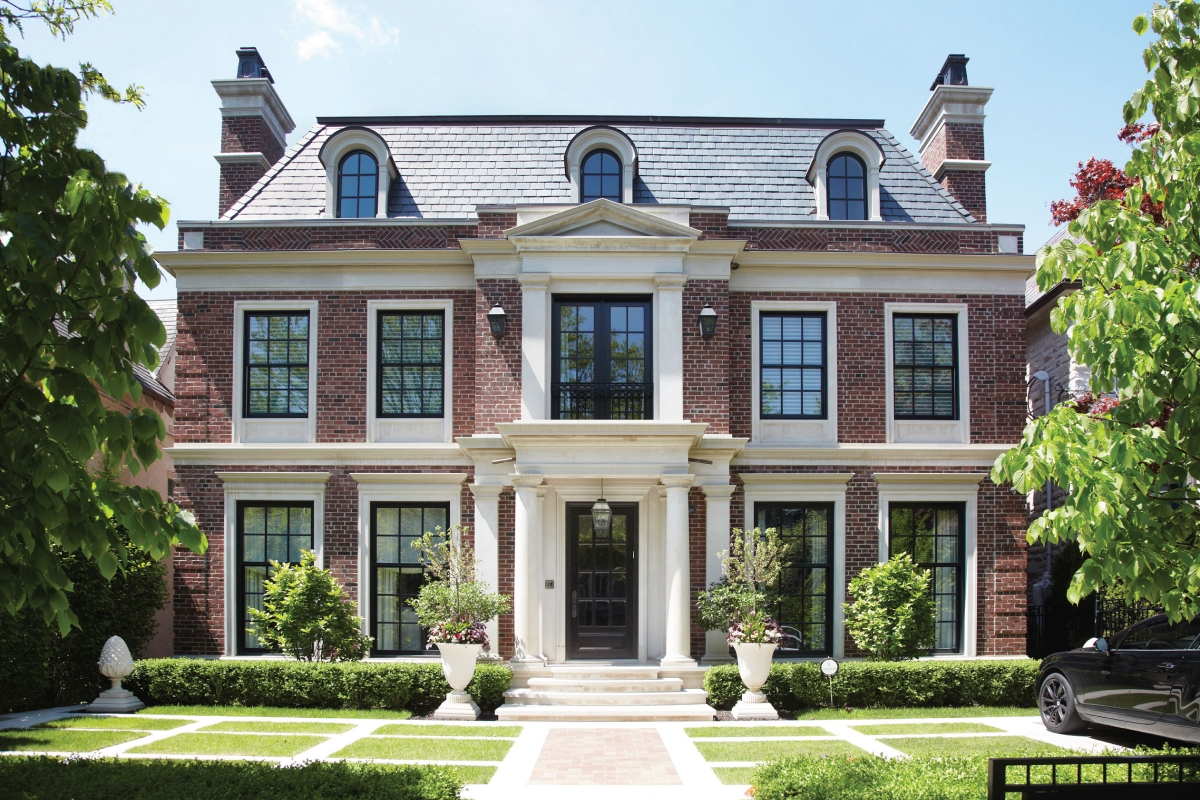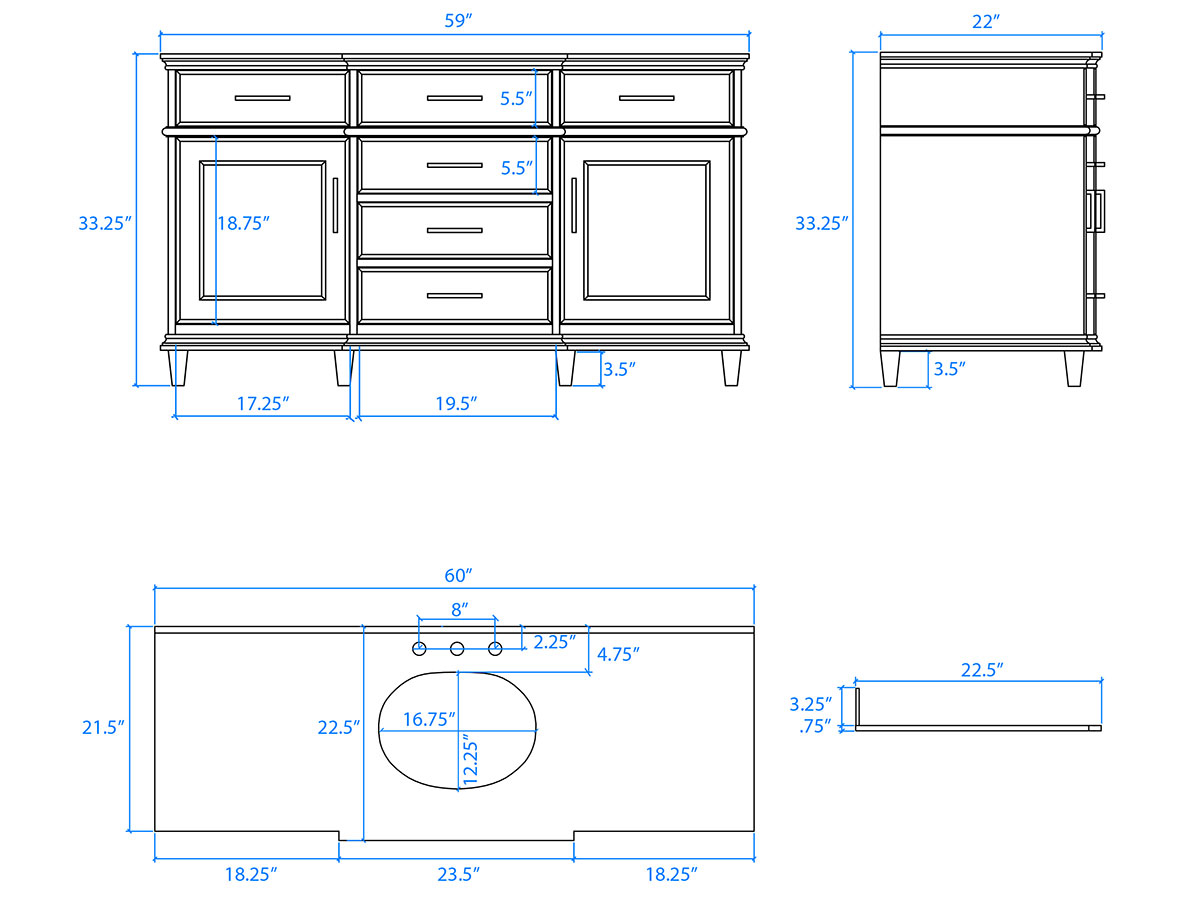The Georgian house design derives its name from the four British King Georges who reigned during the 18th and 19th centuries. This type of house design showcases a classical look, with symmetrical lines, pediments, and a rectangular shape. It is the embodiment of the Georgian sense of restraint, order, and classic design. The front of a Georgian house is typically adorned with architectural details such as engaged columns, dentil courses, and finials. The windows are typically twelve-over-twelve sash, and are usually arranged in twos or threes. Common features of this style of house are a wide front door, an expansive front porch with a pediment, and a Palladian window flanked by two columns. Unlike many other house designs, Georgian houses can still be found in the city of London.Georgian House Design
The Gothic Revival house design was popular in the late 19th century and early 20th century. Characterized by its pointed arches, ornate details, and steeply pitched roofs, the Gothic revival house design is an homage to its medieval predecessors. The symmetrical façade is usually adorned with quatrefoil windows, ornamental brackets, and detailed columns. Common features of this style of house include a front porch or veranda, a prominent gable, and a substantial courtyard or garden. The interior of a Gothic Revival house usually features exposed wood beams, stained glass windows, and large open fireplaces.Gothic Revival House Design
The Victorian house design was popular in England in the 19th century, and was often characterized by asymmetrical façades, multicolored paint schemes, and intricate details. A prominent feature of this type of house is its tower, which usually is surrounded by intricate gables and pointed arches. Other common features of this style are turrets, wrap-around porches, and stained glass windows. Inside, the homes were often accented with Rococo, Gothic, and Tudor details. The interior also featured a variety of different ceiling moldings, including rosettes, dentils, and coffers.Victorian House Design
The Tudor house design is an iconic style of architecture that originated in England in the early 16th century. This type of house is characterized by its half-timbered walls, which are made of wood and plaster. In the front, Tudor houses usually feature a large, welcoming entryway with a wooden door and ironwork hardware. Other common features of this style include casement windows, low chimneys, and diamond-patterned brickwork. This kind of house usually has an asymmetrical design and is often covered in ivy.Tudor House Design
The Edwardian house design was popular in England from the early 1900s until the start of World War I. The main focus of this style of house was to create an airy and light-filled look, by using simple yet striking colors and light-colored materials. Common features of this type of house include large windows, white brickwork, and a steeply pitched, slate-tiled roof. Inside, the houses usually have high ceilings, intricate fireplaces, and large bay windows. This type of house was slightly more ornate than the Georgian and Victorian houses, but still had a classic look.Edwardian House Design
The Cotswold cottage house design is named after the region of Cotswolds in England, where this type of architecture is commonly found. This style of house is typically made out of local stone, with thatched roofs and picturesque gardens. The façade is often adorned with mullioned windows, and the walls are usually whitewashed. Cotswold cottages are usually ornate and inviting, and contain a number of classic features such as wavy chimney pots, leaded windows, and arched doorways.Cotswold Cottage House Design
The modernist house design was popular in the mid-20th century, and is still relevant today. This type of house usually features a linear, angular façade, and is often made out of materials such as wood, steel, and concrete. Modernist houses also often have an open floor plan and a minimalistic interior. Common features of this style of house include dramatic rooflines, large windows, sliding glass doors, and cantilevered decks.Modernist House Design
The Arts and Crafts house design emerged in England in the late 19th century. Characterized by its Tudor revival aesthetic and natural materials, this type of house has a blend of elements from both classical and modern architecture. This style of house is usually made out of stone, brick, or wood, and may have stucco or tile accents. Features such as exposed wood beams, large bay windows, and terraces create a sense of openness and connection to the outdoors. Other common elements are cobblestone walls, leaded glass windows, and multiple fireplaces.Arts and Crafts House Design
The Scottish Baronial house design was popular during the 19th century in Scotland. This type of house usually features a tall tower or spire that stands prominently in the center of the façade. This is often accompanied by intricate masonry work, pointed arches, and a variety of turrets and battlements. Common features of this style of house are stone quoin corners, high gables, circular and oval windows, and a variety of weathervanes and finials.Scottish Baronial House Design
The Regency house design was popular in England in the early 19th century. Often characterized by its classical, dome-shaped façade, this type of house usually demonstrates a high degree of symmetry and detail. Common features of this style of house are white-paneled windows, ornamental pillasters, a fanlight window, and a porticoed entrance. The façade is often made of stone, and may also feature decorative details such as quoins, plinths, and cornices.Regency House Design
British House Design: Perfectly Balanced Between Modern and Traditional
 The
British house design
is characterized by its unmistakable combination of traditional and modern elements. Architects in the UK have developed an iconic style by carefully balancing historical buildings with contemporary accents. This ensures a unique aesthetic that stands the test of time.
One of the most recognizable features of British house design is the utilization of a variety of materials. Muted brickwork and rustic stonework are often used to create a classic feel, while modern glass and steel are also employed to add a sense of modernity. This stunning mixture of materials is further enhanced with historic details such as stained glass windows, wall panelling, and decorative ironwork.
The most popular type of British house design is the single-story cottage. Although these homes have retained much of their traditional charm, many cottages now feature multiple stories as well as large living spaces. The design of the cottage also varies depending on region, with properties in the countryside often featuring large gardens, while town cottages emphasise more of a street-level aesthetic.
In addition to traditional styles, architects in the UK have also begun to explore alternative house designs. From rammed-earth construction to modern prefabs, these unique builds provide both a sense of place and an abundance of amenities. Furthermore, contemporary designs often emphasise natural light and indoor-outdoor living by incorporating bi-fold doors, architectural louvers and skylights.
Finally,
British house design
is renowned for its use of cutting-edge eco-friendly technologies. They often deploy features such as solar panels, energy-efficient appliances, green roofs and rainwater harvesting systems in order to create net-zero homes that are both beautiful and sustainable.
The
British house design
is characterized by its unmistakable combination of traditional and modern elements. Architects in the UK have developed an iconic style by carefully balancing historical buildings with contemporary accents. This ensures a unique aesthetic that stands the test of time.
One of the most recognizable features of British house design is the utilization of a variety of materials. Muted brickwork and rustic stonework are often used to create a classic feel, while modern glass and steel are also employed to add a sense of modernity. This stunning mixture of materials is further enhanced with historic details such as stained glass windows, wall panelling, and decorative ironwork.
The most popular type of British house design is the single-story cottage. Although these homes have retained much of their traditional charm, many cottages now feature multiple stories as well as large living spaces. The design of the cottage also varies depending on region, with properties in the countryside often featuring large gardens, while town cottages emphasise more of a street-level aesthetic.
In addition to traditional styles, architects in the UK have also begun to explore alternative house designs. From rammed-earth construction to modern prefabs, these unique builds provide both a sense of place and an abundance of amenities. Furthermore, contemporary designs often emphasise natural light and indoor-outdoor living by incorporating bi-fold doors, architectural louvers and skylights.
Finally,
British house design
is renowned for its use of cutting-edge eco-friendly technologies. They often deploy features such as solar panels, energy-efficient appliances, green roofs and rainwater harvesting systems in order to create net-zero homes that are both beautiful and sustainable.
























































































































:max_bytes(150000):strip_icc()/SleeponLatex-b287d38f89374e4685ab0522b2fe1929.jpeg)



